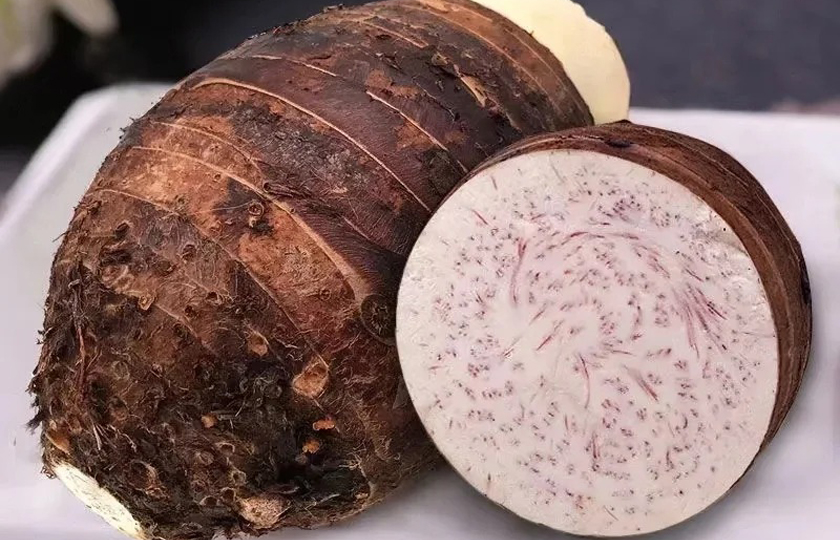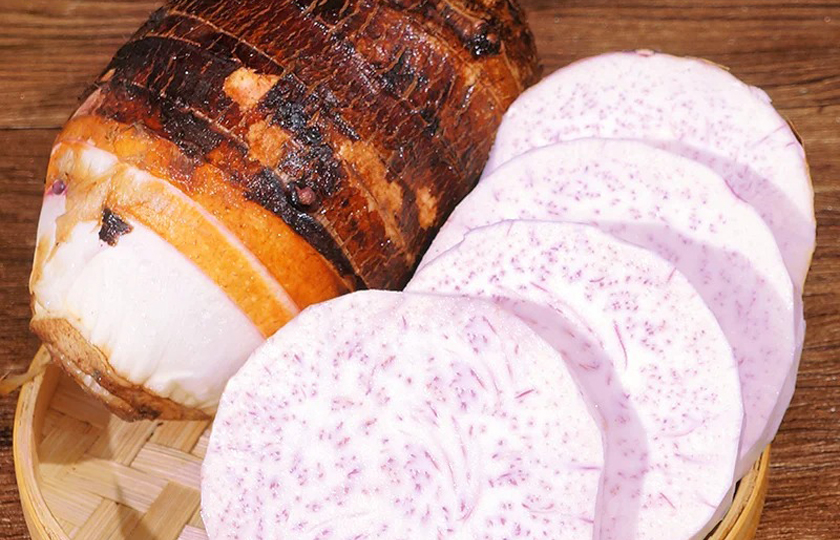Delicious Twist: Can You Cook Taro Root in Ramen ?

Taro is soft, sweet, and nutritious, while ramen is chewy and smooth. But can taro be incorporated into this classic bowl of ramen? What kind of taste experience will cooked taro bring to the dish? Let’s unravel this delicious mystery together!
the answer
Taro has a delicate texture, is rich in starch and fiber, and carries a subtle sweetness. It is packed with vitamin C, vitamin B6, and minerals like potassium and magnesium, making it a popular ingredient in Asian cuisine, often found in soups, stews, and desserts.
Incorporating taro into ramen not only adds a unique flavor and texture but also offers several reasons and tips:
Flavor Absorption: Taro's fine texture allows it to absorb the broth's flavors well, enhancing its taste whether the broth is rich and meaty or light and vegetable-based.
Contrast in Taste: The sweetness of taro contrasts beautifully with the savory notes of ramen, elevating the overall flavor profile and making every bite a delightful surprise.
Cooking Time: Cut taro into uniform pieces (about 1-2 cm). Add them to the ramen pot during the last 5-10 minutes of cooking to ensure they are tender but not mushy. This way, the taro retains its shape while fully soaking up the broth.
Nutritional Boost: Adding taro not only enhances the flavor but also increases the nutritional value, making the dish more balanced.
Tips:
Uniform Cutting: Ensure the taro pieces are of consistent size for even cooking.
Pre-Cook if Desired: For a softer texture, you can pre-cook the taro before adding it to the ramen, or briefly blanch it beforehand.
Can you eat cooked taro?
Yes, cooked taro is safe to eat, but there are some dietary considerations to keep in mind:
Allergic Reactions: Taro may trigger allergic reactions in some individuals. Those with allergies should consume it with caution.
Digestive Issues: Due to its high starch and fiber content, people with digestive problems should limit their intake.
Diabetes: The starch in taro can convert to sugar in the body, potentially raising blood sugar levels. Diabetic individuals should consume it in moderation.
Combining with High-Starch Foods: It’s best not to eat taro alongside other high-starch foods to avoid overwhelming the digestive system.
Do you peel taro before cooking?
Yes, it is essential to remove the skin of taro before cooking. The outer skin of raw taro contains calcium oxalate, which can irritate the skin and mouth, potentially causing discomfort when consumed. Here are the recommended steps for preparing taro:
Wash: Thoroughly rinse the taro under running water to remove any dirt and impurities.
Peel: Carefully use a peeler or knife to remove the outer skin, ensuring that all layers are taken off.
Cut: Slice the peeled taro into uniform pieces to ensure even cooking.
How to cook taro?
Cooking taro is simple and can be adjusted to personal taste. Here’s a common method:
Ingredients
Fresh taro
Salt (optional)
Steps
Prepare the Taro:
Wash the taro thoroughly to remove any dirt.
Use a peeler or knife to remove the skin completely.
Cut the peeled taro into even cubes (about 2-3 cm) for uniform cooking.
Cook the Taro:
In a pot, add enough water and place the taro cubes inside.
Optionally, add a pinch of salt to enhance the flavor.
Bring the water to a boil over high heat, then reduce to low heat, cover the pot, and simmer for about 15-20 minutes until the taro becomes soft.
Check for Doneness:
Use a fork or knife to gently poke a taro piece; it should easily pierce through. If it’s still firm, cook for a few more minutes.
Drain:
Once cooked, use a strainer to remove the taro and drain excess water.
Tips
Cooked taro can be enjoyed on its own or used as an ingredient in soups, stews, and desserts.
For a sweeter taste, consider adding some sugar during cooking to make sweet taro.
Who should not eat taro root?
The following groups of people should be cautious or avoid consuming taro:
Individuals with Allergies: Taro may cause allergic reactions, including skin itching and swelling, and in severe cases, it could lead to anaphylactic shock.

People with Digestive Issues: Taro is high in starch and fiber; consuming it in excess may exacerbate gastrointestinal discomfort, leading to bloating or abdominal pain.
Diabetics: The starch in taro converts to sugar in the body, which could potentially raise blood sugar levels. Therefore, diabetics should consume it in moderation.
Individuals with Poor Gastrointestinal Function: Excessive consumption of taro may burden the digestive system, causing discomfort such as indigestion and bloating.
Are taro and potatoes similar?
Taro and potatoes share some similarities in appearance and taste, but they belong to different plant families. Here are the specific differences:
Plant Classification:
Taro: Belongs to the Araceae family, specifically referring to the species Colocasia esculenta.
Potato: Belongs to the Solanaceae family, primarily referring to the species Solanum tuberosum.
Appearance:
Taro: Typically has a rough surface, with some varieties featuring purple or white skin, and the flesh is usually white or light yellow.
Potato: Can have a smooth or rough surface and comes in various colors, including yellow, red, and purple, with white or yellow flesh.
Texture and Flavor:
Taro: When cooked, it has a soft, creamy texture and a slightly sweet flavor, often used in desserts or as a side dish.
Potato: When cooked, it has a starchy texture and a more neutral flavor, widely used in various dishes.
Nutritional Content:
Taro: Rich in fiber, vitamin C, and minerals, while being relatively low in calories.
Potato: High in starch, vitamin C, and potassium, with a relatively higher calorie content.























